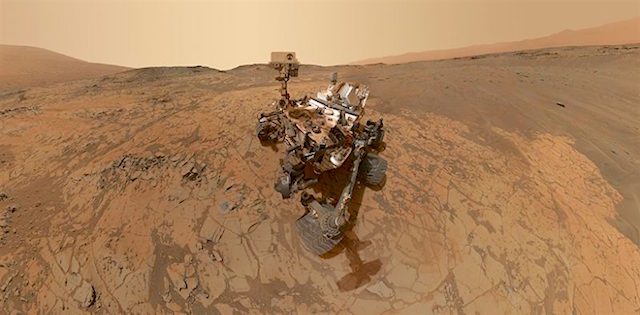 On the basis of studies of impact crater densities on Mars’s surface, scientists have separated the Red Planet’s geologic history into three broad divisions, the most recent of which is the Amazonian epoch.
On the basis of studies of impact crater densities on Mars’s surface, scientists have separated the Red Planet’s geologic history into three broad divisions, the most recent of which is the Amazonian epoch.
Because of the lack of available samples to date directly, however, the numerical ages of these divisions and their associated features have yet to be precisely determined.
Now Martin et al. [reporting in the Journal of Geophysical Research – Planets] have developed a promising new method to remotely date materials on Mars’s surface using the potassium-argon radiometric technique. Following a previous experiment that harnessed the combined capabilities of three instruments on board NASA’s Curiosity rover to successfully date a mudstone collected at Gale crater early in the mission, the team determined the ages of both the primary and secondary materials in a later mudstone sample. The rover collected this specimen, known as Mojave 2, from the Pahrump Hills, whose thin layers appear to have been deposited in the bottom of a lake that once filled the 154-kilometer-wide crater.
Because the Mojave 2 mudstone contains multiple materials, including primary igneous rock grains and jarosite, an alteration sulfate mineral that forms by interaction with water, the team used a two-step heating experiment to determine the ages of both the igneous and the secondary grains, which release the radiogenic argon-40 daughter product when heated to high (930°C) and low (500°C) temperatures, respectively. From these measurements, the team deduced that the original igneous rock grains are 4.07 ± 0.63 billion years old, a result that agrees well with previous study results, whereas the jarosite is less than 3 billion years old. [More at links]








